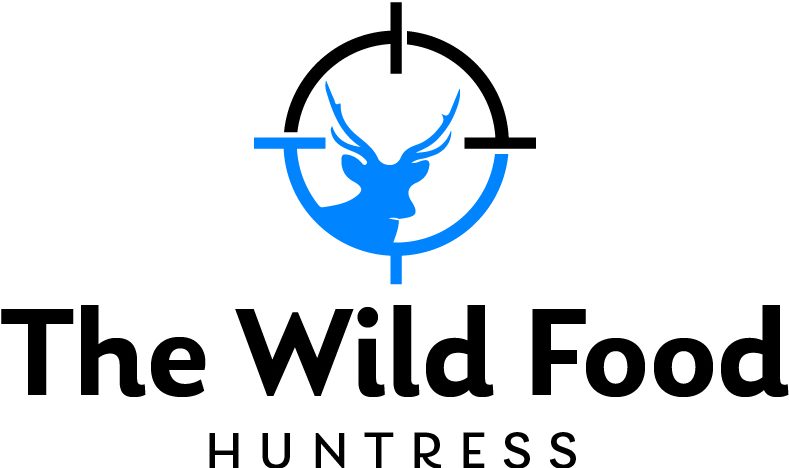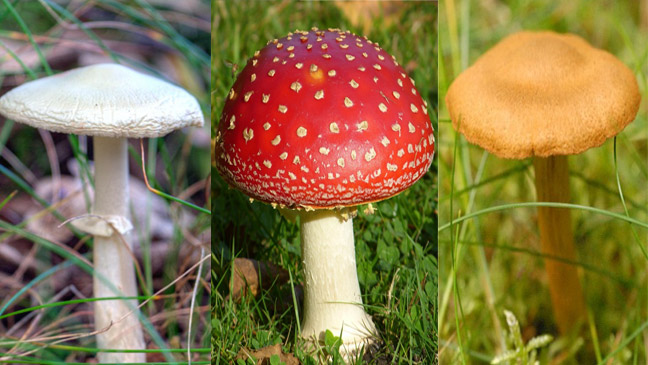Mushroom collection is a way to discover the local food resources and bounty of your own forest. Almost all the mushroom species found in North America are edible. However, many are too fibrous for consumption. About 250 species are poisonous.
Making a mistake or misidentifying a mushroom as edible can have severe consequences. Even more difficult is the fact that some poisonous and edible mushrooms can look very similar. This guide will help you identify common edible mushrooms, highlight those that are poisonous and explain why they should not be eaten.
Chanterelles vs. Jack-O’-Lanterns
Chanterelles look similar to Jack-o”-lantern mushrooms, but Jack-o”-lanterns are poisonous. Although they won’t kill an average adult, eating them can cause digestive problems for several days.
Chanterelles (Edible)
The chanterelles are easily spotted by their gold-yellowish color or brilliant orange. chanterelles are a favorite among chefs because of their peppery flavor, and they can only be found in the wild.
Where to find them: Chanterelles can be found growing on both the east and the west coasts in the U.S. They are smaller on the eastern coast (about the size a fist), while those on the western coast may weigh as much as two pounds.
When you can forage for chanterelles: Forage for chanterelles on the east coast in summer and early autumn, and those of the west coast from September to February.
Habitat: Chanterelles grow in small groups among conifers, hardwoods, shrubs and bushes. They are usually several feet from the base. The chanterelles are often found among the grasses, mosses and leaf litter of mountainous forests.
How To Identify: You pull the chanterelles apart like a string cheese. The interior of chanterelles is white and solid. The funnel-shaped cap is wavy and they do not have gills. However, the stem could show ridges that look like gills.
Jack-o’-Lanterns (Poisonous)
In the United States, there are two types of jack-o-lantern mushrooms. Omphalotus Illumens grows bright orange and is almost glossy east of the Rocky Mountains. Omphalotus Olivascens is found in central and southern California west of the Rockies. Omphalotus has a mix of orange and olive color. In urban areas, Jack-o”-lanterns are often found in large groups at the base or stumps of trees.
How can you tell them apart from chanterelles? There’s a difference between the two. The jack-o-lantern’s gills are deep, true, non-forking and sharp. Chanterelles are characterized by gills-like ridges that run from the cap of the stem. Peeling the stem from a Jack-o-Lantern reveals orange inside. The interior of the stem in chanterelles is paler than its exterior.
You’ll also find Jack-o-lanterns in hardwood forests, where they feed on decaying wood. They’re often found at the base or fallen logs of dead trees. Chanterelles tend to be further from healthy wood. Jack-o”lanterns tend to form large clusters whereas chanterelles grow in smaller clumps. The cap of a jack-o-lantern will look almost like it has been waxed because it is so shiny. However, the chanterelle’s cap has a rougher surface.
False Morels and real Morels
There are some key differences between morels, their toxic twin and the two mushrooms.
Morels (Edible)
Morels are among the most highly-regarded and popular mushrooms in America. Their honeycomb pattern and range of colors from cream to black make them easy to identify. These mushrooms are hard to come by, making them special. They’re also delicious and have converted many non-mushroom lovers to mushroom fans.
Where to find them: Morels can be found in nearly every state. Florida and Arizona are exceptions, as they are too hot and dry for the mushrooms to grow.
When is the best time to forage? Forage for morels early in spring, before trees start to leaf and hide them.
Habitat Morels are found in moist environments and on certain tree species, including ash, tulip oak, hickory sycamore cottonwood maple beech conifers and apples.
How To Identify: Look out for the corrugated or honeycomb-like cap that is growing above a stem of white. When cut open, the inside will be hollow from the cap to stem.
False Morels (Poisonous)
In the United States, there are about a dozen different species of false morels. False Morels are ripe in spring, at the same time that morels are ripe. They also ripen in summer and autumn.
Differentiating between an edible morel and a false morel. False morels’ caps have a saddle-shaped, wrinkled structure, rather than the honeycomb-like appearance. False morels also have a cotton ball-like substance in their stems when cut down the middle, lengthways, from the top. They are not hollow like true morels.
The color of the morels is red, purple and brown. However, the real morels are yellow, gray or tan. The former is less appealing. According to one source, “A false morel is a real morel that has been stepped on, and then left in the rain and sun.”
The Deadliest Mushrooms
The genus Amanita is among the most deadly in the world. Here are a few ways to avoid and recognize two of them.
Death Caps
The death cap is a highly toxic mushroom that grows on the east, west and Canadian coasts.
Description Death cap has a 6-inch wide cap that is often sticky and can be yellowish brownish white or greenish. The cap is white with gills, and it grows on a 5 inch stalk. It has a skirted stem and a cup-shaped white base. Some describe it as having a cleaning product smell.
Can also be confused with: Puffballs and young death caps, such as those of the genera Calvatia or Calbovista, Lycoperdon, or edible tropical paddy-straw mushroom.
Death Caps can be seen from September to November.
Habitat: Under pines and oaks.
Destroying Angels
The pure white caps and stalks of the destroying angels give them their name. They are also members of the genus Amanita and have several species that grow in different parts of the country. All Amanita have the same white fruiting body. A healthy adult can die from consuming a half cap.
Description: A white cap, stalk and gills.
Can also be confused with: At their button stage, destroying Angels can be mistaken for button mushrooms, meadow mushrooms, horse mushrooms and puffballs.
When to look out for: Destroying Angels are most visible in the summer and fall months.
Habitat All Amanitas form relationships with certain tree roots. The Destroying Angels are found in woodlands, or in shrubs and trees on suburban lawns and meadows.
How To Identify: The cap will have some loose flecks from the veil that was covering the mushroom at its early fruiting stages. The mushroom will have a bulbous skirt that surrounds the stem and contains the majority of the toxins. It may also have a cup-shaped structure at the base of the stem, called the volva.
Three Common Edible Mushrooms
You can eat a variety of mushrooms. Three mushrooms that you may find during your next mushroom hunt are highlighted below.
Lion’s Mane
The Hericium Erinaceus, also known as the hedgehog or pompom mushrooms, can be found on hardwood trees during the late summer and autumn. The unique shape of this mushroom, which is similar to the mane on a male lion, or a pompom shaped like a pompom resembles no other. The taste of this mushroom is unique, and it’s often compared with seafood.
How To Identify: Hardwoods, such as beech trees, are common hosts. It is also easy to identify by the fact that its spines tend to grow in a single group, rather than on branches. The spines can grow up to 40 feet in height. You can also find them growing on dead logs.
Maitake Mushrooms
Maitake mushrooms, also known as hen-of-the woods, rams’ or sheep’s heads ( grifola frondosa), grow at the base hardwood trees such as oaks. The mushroom grows in abundance throughout the Northeast, but it has also been discovered as far as Idaho. They can become tough and too large to eat if they grow larger. So, it is best to harvest them when they are still young. The older specimens can also be powdered and used in soups and sauces. They are also a unique breading additive.
How do you identify: The caps of maitakes are fan-shaped or have small, overlapping overlapping tongues. On oak trees they grow best, usually on stumps or dead wood. The underside of the plant looks like the bottom side of a cauliflower. It grows from a single stem that is white.
Oyster Mushrooms
The oyster mushroom ( pleurotusostreatus ) belongs to a group of mushrooms that are commonly consumed. You can find them at any time of year, but they are more abundant in the cooler months. Make sure you clean the gills thoroughly to get rid of any insects. Be sure to throw out the woody stems.
How To Identify: Look out for the scalloped cap on dying hardwoods such as oaks and maples. Dogwoods are also a good candidate, especially after first rains in the fall. The caps are usually whitish gray, but can also be tan. The caps of the cultivated varieties sold in supermarkets may be blue, yellow or pink.
They are called “decurrent” gills because they extend from the bottom of the cap to the stem but not always all the way down. The gills are often arranged in an overlapping, shelf-like pattern. They have no bumps or stains and grow in a smooth, flat form.


